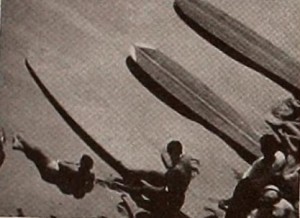
"Dan Billman, jr., has told you in the September number of this magazine how he came to make South of Honolulu. What he could not possibly put into words is the outright and amazing entertainment value of this elaborate record. Hawaii, for the Billmans, meant far more than the Aloha Tower, Diamond Head and the Kodachrome set piece of weekly hula dancing. In their place this adventurous couple found — some 200 miles south of Honolulu — the calm beauty of native life, the exciting patterns of native fishing and feasting and the exotic loveliness of tropical blooms against their true backgrounds. For them, no filming task seemed impossible. Their achievements range from an amusing sequence of the "'sea going" cowboys of the Hawaiian coast, to a striking and incredible study of religious ceremonies within a Buddhist temple. Mr. Billman's beautifully filmed production, accompanied throughout with sound and music personally recorded in the Islands, has the full bodied stature of mature screen entertainment." Movie Makers, Dec. 1941, 564.
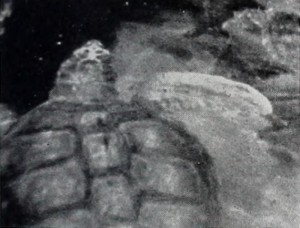
"In a film of a familiar subject — a vacation trip to Florida — Ernest Kremer has done an excellent task of compiling a movie of varied sequences into a unified whole. His camera handling is competent, there are interesting viewpoints and he uses nice transitions to a new sequence, to avoid leaving preceding views too long on the screen. The continuous narrative that is presented with Southern Exposures sometimes draws attention from the pictured scenes, but the commentary in jingle style that accompanies the underwater scenes of fish adds a delightful touch. Mr. Kremer is to be commended especially for the compact and smooth editing of his film." Movie Makers, Dec. 1945, 496.
"Springtime in California, by F. B. Judson, ACL, is an example of what every Kodachrome filmer would be proud to have made, because it studies Nature in her most extensively colorful manifestations, with complete freedom of camera viewpoint, offering closeups, medium shots and long views, all of them richly hued. This film indicates a delicate appreciation of color on the part of its maker, who. having a highly chromatic subject to his hand, did not let it run away with him. but kept it well under control, with the result that he delights with his management of pastel shades, where another might have omitted these and substituted garish footage so easily available in the highly colored California landscape. Mr. Judson is awarded Honorable Mention because he has done a typical thing — a Kodachrome landscape study — with restraint and liveliness, combining two qualities not always found together." Movie Makers, Dec. 1935, 553.
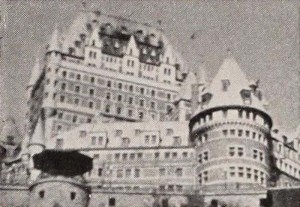
"When you ramble about on a cinematic tour of old Quebec in Carl Nerish's St. Lawrence Sketches, you feel that here at last is a new and different theme for the travel film. The Old World atmosphere of that delightful city is shown with loving sympathy. One of the outstanding points is a clever and human continuity device employed to carry the story along during a tour of the city in a horse drawn carriage. Spoken titles are used with striking closeups of the quaint cab driver who is pointing out the sights to Mr. Nerish and his audience. By studying each shot of the driver, Mr. Nerish was able not only to present a varied series of shots of him, but also to show enough background material to add a good deal to the scenes presented in the regular course of the film. Equally effective are the shots of people in the market place, where a telephoto enables Mr. Nerish to get unposed views. A carefully chosen, but somewhat detailed, musical background was played throughout the film, and it served in no small measure to lend atmosphere to the production. Special credit is due the filmer for his precisely executed titles. Such painstaking work as that involved in centering and lining up movable title letters is seldom seen." Movie Makers, Dec. 1939, 632.
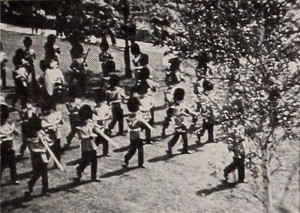
"In Streets of Peace, Lewis B. Sebring, jr., presents a manifold accomplishment in film. Here is a record of the New York World's Fair 1939, but a record which, because of its selectivity, gives the impression of completeness in setting forth a single theme, although the material is both voluminous and varied. Here, also, is an interpretation of the epic idea behind the foreign participation in this great American exposition, the vision of peace, which has since been so rudely interrupted. Mr. Sebring takes his camera through the streets of peace, literally, and we see one after another of the foreign buildings and exhibits at the Fair; we also look at the different national celebrations in the Court of Peace. The visit of the King and Queen of England is recorded in considerable detail. After a scene of children of many lands uniting in a gathering in the Children's World, we find the pointed query as to what these youngsters will make of the "world of tomorrow," and the picture closes with distinguished shots of the United States Building, with its flag and the word "Peace," which appears on its façade. Mr. Sebring's titling is admirable, both in wording and in execution. His Kodachrome exposures have less good moments, but his camera handling is otherwise pleasing. Here is a workmanlike and finished recording of a great international event." Movie Makers, Dec. 1939, 635-636.
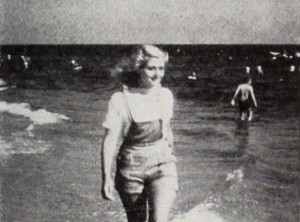
"Sunstruck, by George Mesaros, is a bright genre study of the American beach scene at its colorful, everyday best. There are the sun bathers and the sand babies, the athletes and the antics, and, above all else, the incomparably lithesome and lovely American girl. Mr. Mesaros has caught them all. in sparkling cinematography and with a pleasing selection of camera viewpoints. He has added to these a brace of brief and farcical skits which are well played and well directed. Sprightly music, shrewdly keyed to the varied sequences, rounds out the film's effect. Sunstruck, as suggested in its own foreword, is "gay, glamorous and often goofy."" Movie Makers, Dec. 1944, 496.
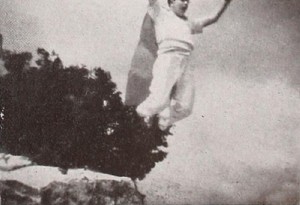
"Donald H. Kelly has cast a comic strip character in Superman Goes West, integrating travel sequences and comedy with great success. While the magnificent cinematographic record of a Western trip is the most engaging factor of the film, the entertainment value of the Superman motif cannot be minimized. The fictional hero is shown to be the consuming interest of a small boy passenger on the trip. The lad proceeds to read Superman comics under varying conditions, despite a changing background of allegedly awe inspiring scenery. One dream sequence with a Superman flavor is a triumph of trick cinematography." Movie Makers, Dec. 1943, 478.
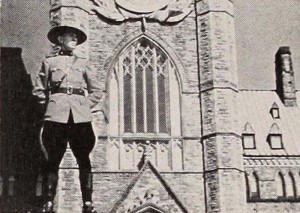
"Sweeping in its conception, stirring in its execution, Then Came the King is a vivid and beautiful epic of honest patriotism. In it, Earl L. Clark has examined the Western way of life, and he has found it good. With elaborate but never exhausting detail, the film traces the history of Canada — and more briefly her American neighbor — from 1800 to the present day. Then, in a world challenged by war and a Canada accused of waning fealty to the Empire, Then Came the King pictures with a magnificent climax the deep and unfaltering affection in which a loyal people hold their rulers. People of all classes and occupations are shown saluting Their Majesties. Sensitively planned and superbly titled, the film very definitely has something to say — and says it with distinction. Viewpoint after viewpoint strikes sensuously on the eye as exactly right for the effect desired. Sequence after sequence marches down the screen with the brave and stirring rhythms of epic poetry. On a few occasions, Mr. Clark's striking imagination has outstripped his straining technical skill, but. from his first frame to his last, the work is stamped unerringly with a fresh and genuine creative spirit." Movie Makers, Dec. 1939, 632.
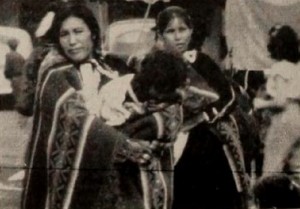
"Edward F. Cross covered an extensive territory of national parks and vacation spots in the Southwest and Western sectors of the United States and has brought back an attractively filmed record of his tour. Unique rock formations have been pictured from well chosen vantage points to make the most of light and shadow. This Land of Ours is climaxed by particularly colorful units in a rodeo's grand parade and a dexterous camera handling of Indian dances. A full narrative indicates careful research to supplement the scenes on the screen." Movie Makers, Dec. 1947, 539.
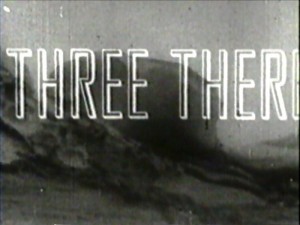
Sub-title: "Galiano Island 1940" Summary: "Impressionistic record of a sojourn on Galiano Island over a Labour Day weekend, with Oscar Burritt, Dorothy Fowler [later Burritt] and Margaret Roberts." (British Columbia Archives)
Total Pages: 18